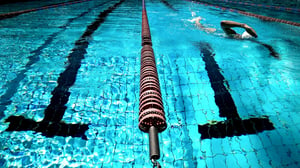At a high school swim meet in Michigan, Xavier Staubs had just finished the last leg of a relay race. He noticed one of his rivals, Kamrin Samson, in another lane struggling and sinking to the bottom. Fans in the stands were frantically signaling that the swimmer needed help. Xavier, with the help of another teammate, dove to the bottom and pulled Kamrin up and out of the pool, perhaps saving his life. Kamrin indicated that he may have held his breath too long during his leg of the relay.

This story certainly is heartwarming and thankfully has a good ending. However, it’s a good reminder for organizations to be on the lookout for hypoxic blackout. Extended breath holding is very dangerous. In competitive swim environments, it’s easy for a swimmer to get caught up and think they can hold their breath longer than they should. If they’re hyperventilating before the race, this can be a recipe for disaster. Organizations should make sure it’s clearly stated that breath holding is banned in their pools. Lifeguards should be watching for this, especially during swim meets.
Also, it’s troubling in this story that fans in the audience noticed something was wrong but the swimmers reacted faster than the lifeguards. During swim meets, it’s very important to still have enough lifeguards on duty diligently watching the pool. Swim coaches should not be counted on to act as lifeguards during swim meets or during practice with their teams. Check out our article with safety tips for pools during swim lessons and swim team practice.
If organizations are hosting swim meets with older kids, it can be tempting to assume all the swimmers are experienced and don’t need as much supervision. However, this story illustrates that nothing could be farther from the truth. Ensuring a safe environment for swimmers is the most important part of these events.





